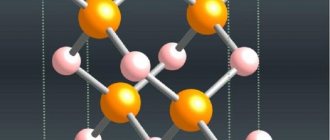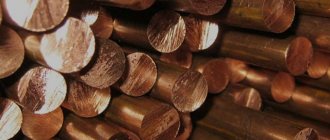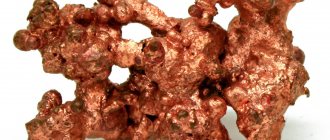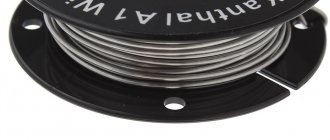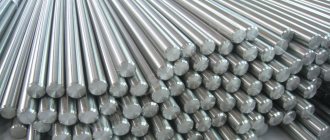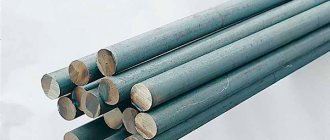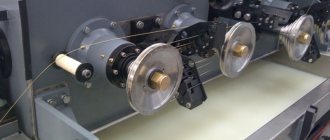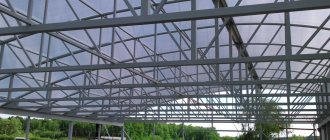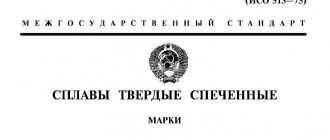Technical characteristics of copper grounding bars
To prevent fire or damage to the electrical network in the event of an accident, various technical means of protection are often used. A popular example of such a device is a copper ground bus. But where is it mounted and installed? What state GOST requirements regulate this equipment? What are the main types of copper bars? Below we will find out the answers to all these questions.
Why is it needed?
The copper ground bus is a conductor that has low resistance. This part is very often attached to the body of the electrical panel, which distributes electricity throughout any facility. In the event of an emergency (short circuit, damaged wiring, etc.) it can withstand excessive heat and electric current for a long time, so this part is very often used as the main or auxiliary element of wiring grounding.
In a technical sense, the ground bus is a flat, smooth plate that has a uniform structure and smooth surface. For ease of storage and/or transportation, the plates can be produced in the form of circular coils. This part can withstand cooling down to -50 degrees and heating up to +270 degrees Celsius.
In the event of an emergency, it can withstand voltages of up to 1 thousand volts. Such unique protective properties are explained by the physical properties of copper, whose thermal conductivity is more than 400 watts/(m X K). Under normal conditions, the copper busbar does not crack, melt or rust (note that the anti-corrosion properties are maintained when working not only in dry conditions, but also in water conditions). For the production of copper busbars, hot pressing technology is usually used, followed by cold rolling.
Let's look at the key types and their differences.
Plasticity (soft and hard)
Special markings must be applied to the tire plates depending on the type: soft tire - ShMM, hard tire - ShMT.
CMM is more elastic, so in practice it is used in many areas of industry - mechanical engineering, mining, space industry, and so on.
CMT is more durable, but less elastic, so it is often used for domestic needs (to protect wiring in homes, warehouses, small production workshops, and so on).
Please note that in addition to ShMT there are also super-strong solid tires ShMTV, the main difference of which is the complete absence of oxygen in the alloy.
Material shape (plate strips and circular coils)
In most cases, copper bars are made in the form of individual plates in the form of strips, the length of which is 3-6 meters. Such plates are easy to pack and transport, which ensures their high popularity. They can also be produced in the form of circular coils, the length of which can be 20-50 meters. Coils are usually produced for the needs of heavy industry, as well as for long-distance transportation.
Stiffness (flexible and rigid)
Rigid busbars are hard and difficult to work with, so they are commonly used as a replacement for the main wiring cable. Flexible busbar is an easier material to use, so flexible plates can be used for the installation of distribution networks and power plants.
Availability of insulation
For normal conditions, you can buy ordinary plate tires without insulation - nothing bad will happen. If there is a risk of liquid entering a substation with an electrical panel (a simple example - the substation is located near the sea or river), then it is recommended to use plates with additional protective insulation.
Grades and impurities in non-ferrous metals
Copper grades, depending on manufacture, differ in the quantitative composition of impurities. If it is a cast metal, then their number is 12. Cathode copper has 19. Ultrapure copper has 22. Their presence affects performance characteristics.
The presence of oxygen, which is present in an amount of 0.001−0.08%, has no effect under normal conditions. It begins to have a detrimental effect only at high temperatures. In this regard, oxygen-free brands are more expensive and are manufactured only to order. The presence of oxygen, lead, zinc or cadmium during soldering at the time of heating leads to the formation of a brittle zone in this place.
The presence of silver at the level of 0.05% has a positive effect. The creep of copper decreases, but this does not affect the electrical conductivity. But this indicator is badly affected by phosphorus, iron, antimony, tin, and arsenic. Their content ranges from 0.001−0.05%. The number of such elements is greater in solid rods and strips. Less in cast billets.
A change in the percentage composition of impurities by 1% leads to a loss or improvement of thermal conductivity by 3%. In this regard, this indicator depends on the manufacturing technology and GOST standards according to which production is carried out.
Technical characteristics and GOST requirements
In Russia, copper busbars must be produced taking into account many technical requirements of GOST. The main regulatory documents are GOST 859-2014, GOST 18690-2012, TU 48-0814-105-2000 and some others. GOST requirements apply to many parameters - type of raw materials, mechanical properties, presence of defects, labeling, storage, and so on. Below we will briefly look at each option individually.
Recommended raw materials
Not all copper alloys are suitable for production, but only those that contain a minimum amount of impurities (no more than 1%). The oxygen content is especially critical in this regard, since this element negatively affects the strength and anti-corrosion properties, therefore the oxygen concentration in the alloy should be minimal (no more than 0.01%).
The optimal brand for the production of protective tire plates is M1, M2 and others. Copper that has undergone various primary processing can be used as a raw material - rolled, wire rod, ingot casting, pressing, and so on.
Presence of defects
Copper plates must be free from defects and various damages (cracks, corroded areas, holes, etc.). At the same time, the presence of lubrication and local oxidation, which was formed for natural reasons, is allowed.
A number of serious restrictions are also imposed on the straightness of copper bars. The minimum crescent shape is no more than 1.75 millimeters per 1 meter of product length. Also note that GOST allows for a higher crescent shape (up to 4 millimeters per 1 meter of length) - but only if there is a prior agreement between the customer and the contractor (that is, unauthorized excess of the norms without agreement with the customer is not allowed).
Mechanical properties
The copper busbar must meet certain requirements regarding elongation.
- With a plate thickness of 2.5 to 8 millimeters, the GOST copper busbar should have a relative surprise of no more than 37%.
- If the plate thickness is more than 8 millimeters, according to GOST it should have a relative elongation of no more than 40%.
This parameter is very important from the point of view of the safety of the copper bus. Why? The point is that if a short circuit occurs, the copper plate will be saturated with excess electrons, which can lead to cracking of the plate. The lower the relative elongation, the longer the plate can successfully “hold” the electric current. This is especially critical when working with high current or voltage.
Transportation and storage
We list the main state requirements:
- Each package must be labeled with all technical information. It allows you to uniquely identify not only the product, but also its manufacturer. Basic information - the name of the manufacturing plant, its sign, type (ShMT, ShMTV, ShMM), thickness and width of the plate, batch number, date of manufacture and others.
- The plates may be packed in uniform packs. The weight of one block of plates should be no more than 200 kg. Please note that products of the same brand can be placed in each package. M1 and M2 cannot be placed in the same package. For packaging, it is recommended to use regular wrapping paper, as well as wire wrap for fastening. By prior agreement with the customer, it is allowed to transport copper busbars without packaging using container delivery methods.
- By law, the manufacturer must provide a warranty. The warranty period depends on the type of product. In the case of ShMT and ShMTV - at least 6 months, ShMM - at least 1 year. Please note that the warranty is subject to the same rules as regular products.
Product characteristics
Copper electrical busbars are divided into types. Depending on hardness :
- solid. They come from ordinary copper ShMT and oxygen-free copper ShMTV;
- soft. They are designated ShMM and are made from grades M1, M2, M3.
The thermal conductivity of copper is 401 W/m. It is significantly higher than that of steel or aluminum. When operating in dry conditions, tires are virtually free from corrosion.
They lose their stability when placed in a solution of ammonia or ammonium chloride. Oxidation occurs when copper comes into contact with aluminum or zinc.
Regulatory national and interstate standards are as follows:
- GOST 859–2014. Is an interstate standard;
- GOST 434–78. Technical specifications for rectangular tires;
- GOST 18690–2012. Cables. Packaging, labeling and storage.
Main grades of copper for manufacturing
Pure copper-based alloys are used for production. According to GOST, the content of third-party elements should be less than 1%. Why such strict requirements? The thing is that third-party elements (even in small quantities) significantly worsen the electrical properties of copper. They reduce electrical conductivity, significantly increase resistance to electric current (which leads to unnecessary and even dangerous heating of the material), increase the likelihood of physical cracking, and so on.
Most often, the composition of a copper conductor includes various metal impurities - iron, silver, tin, zinc and others.
Copper grades
- M0b. This grade is copper that has been purified by a high-precision refining method. The total concentration of copper in the alloy is 99.96-99.98%. Contains a minimal amount of oxygen (on average 0.005%, but not more than 0.01%). In small quantities, the alloy may contain iron, phosphorus, arsenic, antimony, zinc and other elements.
- M1. This copper is the result of remelting cathodes under normal atmospheric air conditions. The total concentration of copper in the alloy is 99.9%. The oxygen content is 0.005-0.01%. May contain zinc, sulfur, lead, nickel, tin, antimony, and iron in very small quantities. Please note that in addition to the M1 variety, there is also an M1E variety. These brands are identical in chemical composition and physical properties. The only difference is that copper must be tested for electrical conductivity before use.
- M2. This copper is obtained by melting scrap (various rods, fragments of sheets, microcircuits, wires, and so on). The total copper concentration in the alloy is 99.7%. The brand may contain oxygen in a concentration of 0.007-0.008%. In addition to oxygen, the alloy may contain some other elements - antimony, lead, sulfur, arsenic, silver, zinc.
Characteristics and features of SMT copper busbars
For the production of conductive products of the ShMT brand, hot and cold rolling metal is used. Most of the elements of electrical circuits and busbars are made of M1 grade copper, which has significantly better characteristics than other alloys, including aluminum.
The unique characteristics and features of copper busbars of this brand are:
- the ability to easily bend up to 90 degrees, without loss of performance characteristics;
- the plasticity of ShMT brand products is not inferior to similar parameters of tires marked ShMM;
- compared to aluminum alloys, the electrical conductivity of products of this brand is 1.6 times greater;
- plasticity and good thermal conductivity provide a wide range of product applications;
- environmental friendliness of the material, the ability to reuse conductors of any cross-section, hardness and durability are the main characteristics of the product.
Manufacturers supply the market with products containing at least 99.9 percent copper. In the manufacture of products, metal grades M0, M1 and M2 are used with a percentage of impurities of 0.03, 0.1 and 0.3 percent, respectively.
Advantages of ShMT tires
Our company offers to buy ShMT tires that meet the requirements of GOST. The catalog presents products of multiple non-multiple lengths. The advantages of electrical products include:
- ease of installation and dismantling if necessary. Copper busbars are used in various fields of activity, regardless of external conditions;
- ductility and lightness ensure that the characteristics of the tire remain unchanged under various deformations. Product properties remain unchanged;
- The melting point of copper bars exceeds 1000 degrees. If there is a potential fire hazard, there is no alternative to such electrical products;
- high strength and hardness makes copper alloy bars a universal conductor;
- high resistance to corrosion and oxidation. At high humidity, the use of tires made of copper alloys is the best option;
- The service life of the product is several decades, regardless of the conditions of use.
It is possible to order products in coils or strips. The section width in mm may vary, depending on the brand of product, purpose, and features of use. The length of the strips varies from 2 to 6 meters.
COPPER ELECTRICAL BUS in Moscow
A copper electrical busbar is a strip made of high-purity copper or made from intertwined conductors with a round cross-section. These two forms are the most popular.
Copper busbars are blanks for all kinds of auxiliary and fastening parts used in energy saving systems. Copper buses are also used in many industries, radio engineering and household construction.
Copper is known to have excellent thermal and electrical conductivity. At the same time, it has high corrosion resistance and attracts with its technological qualities. Excellent ductility, high melting temperature and acceptable electrical resistivity make it possible to produce a separate type of non-ferrous rolled metal - copper electrical busbar. It is this material that is often used in the manufacture of modern electrical equipment and many electrical parts.
Copper busbar marking
For example, ShMM 8.00x40.00 or ShMT 60x8:
- the first two letters ШМ – copper busbar;
- the third letter indicates the hardness of the raw material: M - soft, T - hard;
- The numbers indicate the cross-sectional dimension in millimeters.
In the case when the product is made from oxygen-free copper, a fourth letter B is added to the designation.
Characteristics of copper bars
Electrical copper busbars are produced in accordance with GOST 434-78 from copper alloys marked M0b, M1 and TU 48-0814-105-2000 from M2, the chemical composition of which is regulated by GOST 859-2001. The grade of rolled metal indicates the purity of the alloy, its alloying elements and indicates the features of manufacturing methods.
You can buy electrical copper busbars from TsvetMetSnab LLC in Moscow in coils or strips 2-6 meters long. The cross-sectional shape of the copper busbar is similar to copper tape, but is thicker.
Main dimensions of the copper bus:
- Width: from 15 mm to 120 mm;
- Length: from 2 m to 6 m;
- Thickness: from 3 mm to 30 mm.
During production, the corners in the cross section of the product are necessarily rounded.
The weight of a copper busbar depends on its thickness, width and length. For example, the weight of one linear meter of electrical copper bus 50x5 is 2.23 kg, 40x4 is 1.43 kg, 100x10 is 8.91 kg, 120x10 is 10.69 kg, and the weight of a meter of copper bus 15x3 is only 400 grams. The copper bus has good ductility, high resistance to corrosion processes, thermal and electrical conductivity.
Solid copper bar
Hard copper bars are used less often than soft ones. They are made from a regular copper alloy and have lower conductivity compared to soft busbars. The CMT copper busbar is applicable in areas that require the provision of a durable and immovable busbar.
Soft Copper Bar (Flexible)
Due to its operational parameters, the soft copper bus ShMM has gained wide popularity in a wide variety of industries: from aircraft manufacturing and the metallurgical industry to household and space applications.
In these areas, soft grades of copper M1, M1M, M2, etc. are used. Busbars made of copper marked M1 or M2 are made from raw materials containing oxygen and requiring special conditions for processing by welding or soldering. These products are susceptible to deformation in a hot or cold state and are highly wear-resistant after a long time of use.
Copper bus M0b made of oxygen-free copper
A copper bus marked M0b made of oxygen-free copper (SHMTV) is a rolled metal product made from a copper alloy that does not contain oxides. Today, all leading manufacturers use this copper to manufacture their products, since it has a number of advantages in comparison with copper of other brands. Oxygen-free copper lends itself well to temperature treatment, all kinds of welding and soldering at high temperatures; when heated, evaporation does not occur, and is less brittle and breakable. But the price of oxygen-free copper busbars is very high.
The advantages of electrical copper busbars, thanks to which they have become popular as auxiliary raw materials for electrical engineering:
- convenient and easy to install and dismantle;
- have design versatility;
- are distinguished by flexibility, allowing copper products to retain all positive parameters in a state of deformation;
- they need high temperatures for their melting (more than 1000 degrees Celsius), therefore they are fireproof to a certain extent;
- are characterized by ductile strength;
- have anti-corrosion properties;
- durable;
- in the production of copper busbars, copper alloys of category M1 (99.9% copper composition) are used with the presence of alloying elements, often titanium, which increase the ductility of the finished products;
- On the market for this product there are electrical busbars made of copper, which are absolutely prepared for electrical installation work in a narrow field, i.e. They have special ends with holes for universal fastenings and factory insulation, which provides the required safety indicator for certain systems.
Advantages of electrical copper busbars
Basically, buses, cables and wires are made from metals such as copper or aluminum. But qualified electricians give preference exclusively to copper conductors, since, in comparison with aluminum busbars, they have a higher level of mechanical strength and have good flexibility, which makes installation work easier. At the same time, copper busbars are easily connected to other copper conductors and are not subject to oxidation.
Application of copper bars
Copper busbars are often used for mounting busbars or trolleys. Finished products make it possible to save electricity, are lightweight, durable and highly durable in use. Copper bars are used in all kinds of electrical installations. For example, in low-voltage equipment - for coupling with electrical circuits.
In high-voltage equipment they can be used in areas requiring low reactive and active circuit resistance.
Tires made of oxygen-free copper are used for the production of space and vacuum equipment. They form the basis of switchgear, linear accelerators, superconductors and electronic devices. These copper products are popular and indispensable in the field of microelectronics, nuclear energy, construction and jewelry production.
offers to buy an assortment of copper bars from a warehouse in Moscow and to order. By phone (495) 410-53-42
You can order not only rolled copper metal, but also cutting or cutting services, and also discuss the terms of delivery of goods to your site.
Find out the cost
Advantages of ordering ShMT tires from our company
Copper busbars of the ShMT brand are used for grounding buildings for various purposes, as backbone nodes due to their high throughput. It is relevant to use the product as a replacement for a conductive cable. Tires are used in various industries, as well as at the household level.
Our company offers to buy tires made of copper alloys in various sizes. Delivery is carried out from a warehouse in Moscow wholesale and retail. We always have a large stock of products marked ShMT and ShMM. Affordable prices, an extensive range, short delivery times, high quality products are the main advantages of ordering our tires. You can place an order on our website or by phone. Company managers will tell you about the features of each product brand and help you make the right choice.
Source
Requirements for electrical products
Manufactured products for the electrical industry must meet established standards. The requirements are as follows :
- Raw materials used. In accordance with GOST 859–2014, the grade is taken no lower than M1. This can be copper rod, ingots, extruded billets or long products.
- Dimensions. Parameters taking into account tolerances and radii of curvature are regulated by standards in accordance with GOST 434–78. The length of the strip is 2-6 m.
- Defects. There should be no damage to the surface. Changes in color are allowed due to traces of grease. The crescent shape should be within 2.5 mm per 2 m length. Tires should not have any cracks or delaminations.
